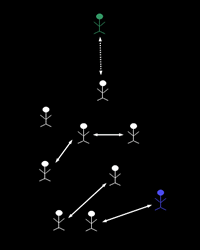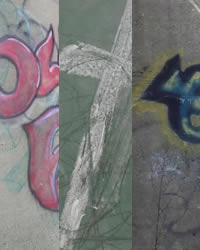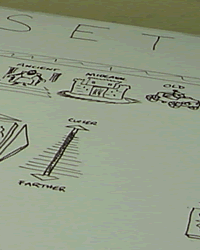mPath Defining Problem Space
This award-winning CHI 2005 student project began as an exploration of a population unfamiliar to my design team. Asked to create a virtual companion for the elderly, my colleagues and I began by trying to understand the needs and risks that accompany aging. This led us to a few key insights. First, the comfort level with technology was not very high for senior citizens. Second, we saw isolation as producing a negative spiral away from good mental and physical health. Our definition of virtual, therefore, had to acknowledge there is no substitution for human companionship.
Mutual Politics Interviews
Influenced by the Relational-Cultural Model, my design research examined the obstacles to mutuality in online political discussion. Often, the best way to explore a problem space is to talk directly to the people who frequent the domain. My initial interviews are informal, using a few general questions to stir a conversation. The goal is empathy: to understand how the other person experiences the world and how that person comes to make decisions. Formal interviews are structured, asking the same series of questions to many people. On this project, informal interviews were conducted with local politicians and community activists, relational therapists and wiki experts. PoliticWiki participants were interviewed to help explain collaboration activities over the course of the study.
Inner Child Research
Brainchild, a tangible computer input device intended for young learners, arose out of extensive research into the edutainment industry. Our small team of designers was tasked with the creation of a strategic plan and working prototype for an e-business solution. After focusing on young learners of ages three to five, we investigated both the existing fare of educational computer games and the low-technology toys with which children play. Our target consumer base consisted of over five million households and sought to fill a perceived hole in the products offered to this demographic. We prosped a new company, Inner Child, to become the environment for this and future designs aimed at children's education.
The Power of Gangs Collections
Collections are the gathering of artifacts from popular culture. These things — photos, tools, signs, terminology, icons, etc. — represent a summation of one aspect of the target user's domain. Collections supplement academic literature and provide inspiration and insight through the patterns they highlight. For this project, one such collection was gang graffiti. Photos were donated from colleagues, sought from known repositories for such images, and taken as original photographs from the local community. When viewed together out of the socioeconomic context of the neighborhoods, the artistic expression and emotion of the graffiti was readily apparent. This led to a few concepts, including a GPS-tagged walking tour of youth art.
Brainstorm Story Composition Exhibit
Brainstorm is an exploratory space to be installed in a children's museum. Visitors interact with up to five interfaces within the Composition space — Character, Setting, Plot, Detail and Structure — before moving into the Viewing area, which is comprised of several movie screens. The information for each individual story is collected using a re-usable plastic card with a magnetic strip. One card is carried through the exhibit by each person and inserted into readers at each station. When a completed story card is entered into the slot at the back of the Viewing area, the author is prompted to record a video identification and story title. These video clips are used before the computer-generated movie is presented on one of the screens.
The Power of Gangs Ethnography
True ethnography isn't practical for most design projects, given the time it takes to fully immerse one's self in a different culture long enough to gain both trust and insight. Other forms of psuedo-ethnography — such as rapid ethnography, participatory design, contextual inquiry, and photo journaling — are effective tools to understanding a user group. Constraints due to time, access and personal safety prevented direct observation of gang members on this project. However, virtual ethnography of gang-based content sites proved very informative. One of the informal studies conducted was in monitoring the GangInfo mailing list comprised of police officers, sociologists, educators and others interested in gang prevention.
|
4306 East 10th Street | Bloomington, Indiana 47408 | 812.360.2557 |
k m a k i c e @ i n d i a n a . e d u
|

